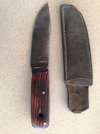- Joined
- Feb 23, 1999
- Messages
- 4,855
The kamis back in the hills say their blades will last a lifetime, but the customer may come back after only 15 or 20 years for a new handle. HI has upped the ante with its handles that go all the way through and are pinned at the back, which are more durable.
But even here in the states I see evidence of the old kamis' wisdom. Aged blades with destroyed handles keep finding me. I took care of a couple this weekend and thought you might enjoy seeing them.
This first was said to be an old Tlingit blade. The sheath and the handle were both broken when I got it. It looks similar to knives from the Phillipines. Who knows where it came from or where it has been.
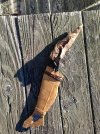
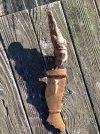
The new handle is a burnt out root I picked up several years ago when hiking in the Cascades. It fit the hand and I couldn't leave it laying by the side of the trail. I finished the hollowing of the inside nature had started, and drilled a couple of indents to help the epoxy hold.
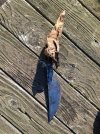
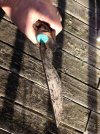
The blue is an epoxy paste I used to secure the blade in it's new handle.
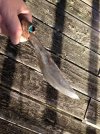
The handforged blade is unusual in that it is just ground on one side.
But even here in the states I see evidence of the old kamis' wisdom. Aged blades with destroyed handles keep finding me. I took care of a couple this weekend and thought you might enjoy seeing them.
This first was said to be an old Tlingit blade. The sheath and the handle were both broken when I got it. It looks similar to knives from the Phillipines. Who knows where it came from or where it has been.


The new handle is a burnt out root I picked up several years ago when hiking in the Cascades. It fit the hand and I couldn't leave it laying by the side of the trail. I finished the hollowing of the inside nature had started, and drilled a couple of indents to help the epoxy hold.


The blue is an epoxy paste I used to secure the blade in it's new handle.

The handforged blade is unusual in that it is just ground on one side.
Last edited:

